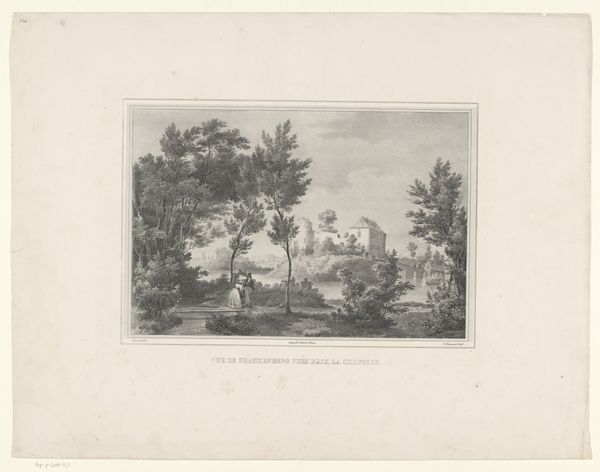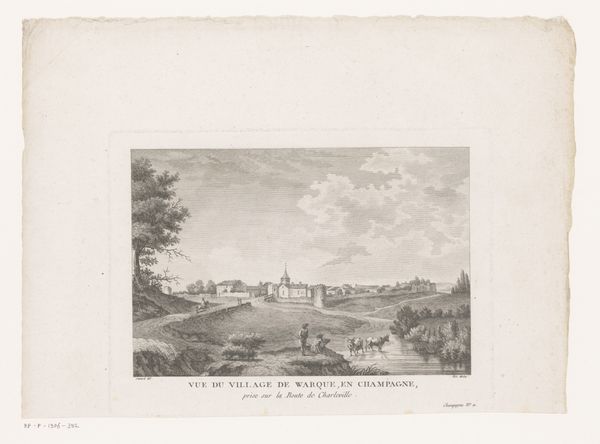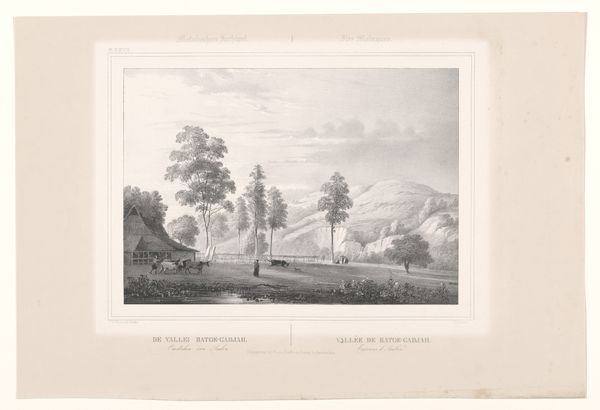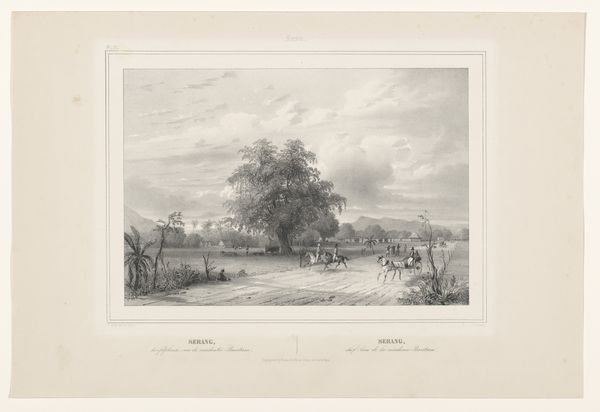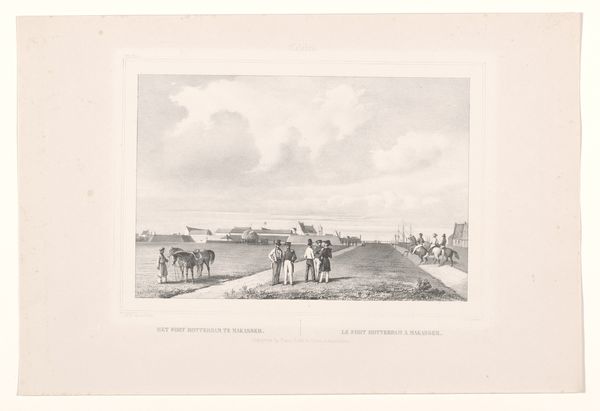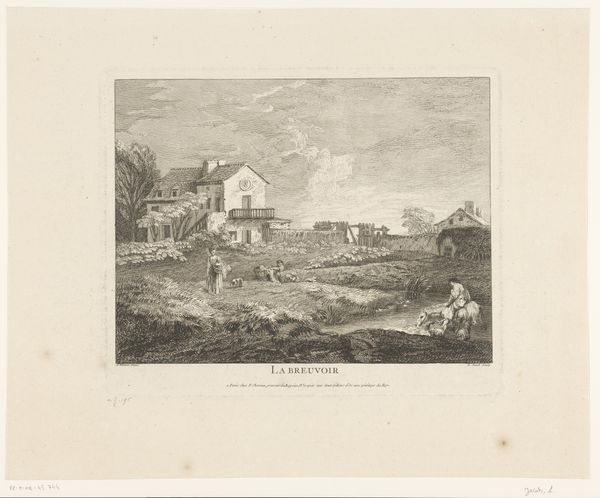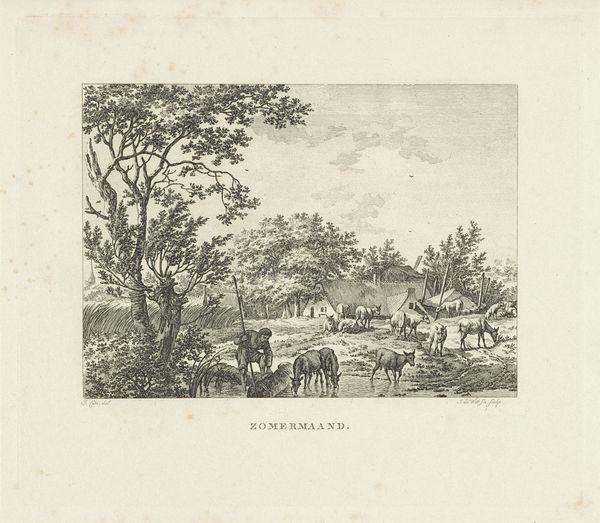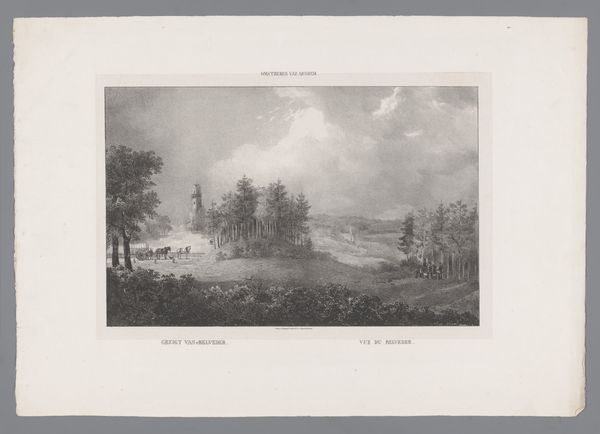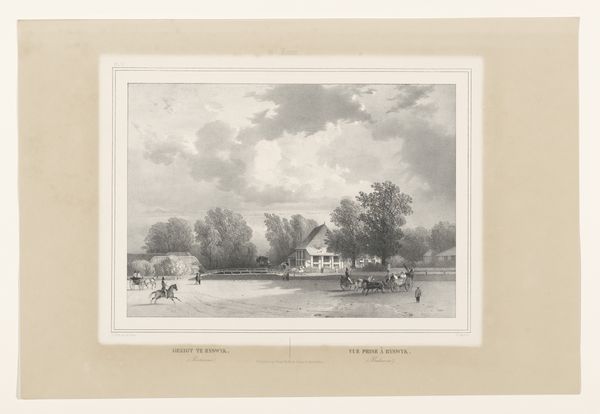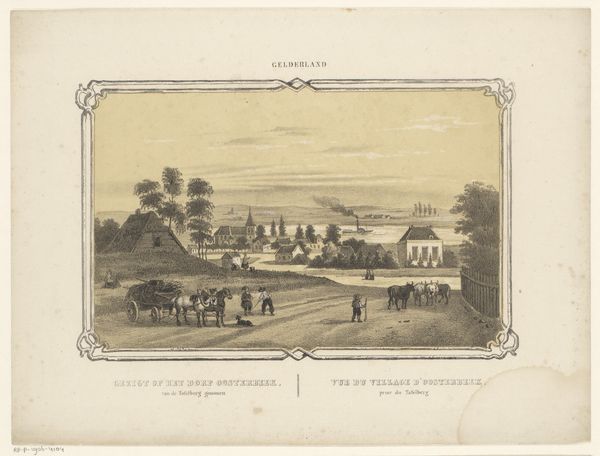
print, etching
#
dutch-golden-age
# print
#
etching
#
landscape
Dimensions: height 510 mm, width 340 mm
Copyright: Rijks Museum: Open Domain
Editor: So, here we have Paulus Lauters' "Landschap met christelijke kerk op Riauw," or "Landscape with Christian Church on Riau," an etching dating from around 1843-1845. I’m immediately struck by how the scene feels so pastoral, almost idyllic, yet it was made using the industrial process of etching. What stands out to you? Curator: What I see is the fascinating intersection of Dutch landscape tradition being exported and imposed. Etching, a repeatable medium, allows this vision of colonial order – the church, the neat fence, the "domesticated" animals - to be circulated. The printmaking itself facilitated the spread of this specific ideology, turning labor into consumable commodity. Editor: Interesting. So, the means of production—etching—becomes central to the artwork's message? Curator: Absolutely. The artist isn't just depicting a scene; they are participating in the process of manufacturing and disseminating a particular understanding of landscape and the values projected onto the landscape. Think of the materials needed, the workforce that reproduced the image on commission; the artwork isn’t separate from the processes that birthed it. Editor: So, by focusing on the materials and how it was made, we see more clearly the relationship between colonial power and art? Curator: Exactly. And we can begin to unpack how these images were consumed, who benefitted, and how the artistic endeavor was, and continues to be, interwoven within cultural and economic systems. How the etching method helped reinforce ideas about possession and the artist’s involvement in a bigger scheme. Editor: It definitely reframes how I initially saw it as just a peaceful scene. I'll be sure to keep that in mind when approaching other landscapes. Curator: It’s crucial to look at how art is materialized; the act of making transforms an object into evidence.
Comments
No comments
Be the first to comment and join the conversation on the ultimate creative platform.



